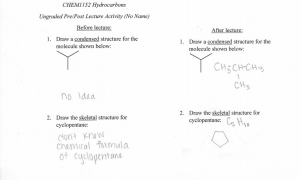Toward the Failure-Centered Classroom-Part 1
By Melody Kelley, Ph.D. (Assistant Professor, Chemistry, PC)
It ended like any other lab session-with students busy rinsing and replacing glassware, packing their belongings, and waving goodbye. I was filled with a sense of self-assurance, ready to pat myself on the back for another day of quality instruction.
Job well done, Dr. Kelley.
Then it happened. On their way out- one student nervously uttered a statement that I will never forget. It disrupted the repetition and routine of the moment.
“Sorry for asking so many questions.”
To a teacher who prides themselves on creating a community atmosphere in the classroom, the words cut like a knife. In that moment, it occurred to me that while I had successfully cultivated a rapport with my students it did not immediately translate into a comfort with risk and failure.
No, I’m the one who’s sorry
This blog post is the first of three that will explore the “failure-centered classroom.” Each blog will offer one strategy that instructors can use to develop more failure-friendly courses.
Strategy #1- Frequent Formative Assessment
Formative assessments are a type of evaluation that generally serve three functions in the classroom- (1) monitor academic progress, (2) provide real-time feedback to instructors, and (3) drive reform in educational practice and policy.1
Since the outcomes of a formative assessment are often indeterminate, formative assessments, in themselves, are a model for risk-taking. Additionally, frequent low-stakes assessments support student metacognition- allowing for the internal reflection necessary for students to challenge their belief systems around failure.1,2 A recent study in STEM inquiry-based classrooms found that formative assessments encouraged a greater sense of “student agency” and supported inquiry learning.3
Formative assessments also align with inclusive teaching. In “How to Make Your Teaching More Inclusive: An Advice Guide,” Viji Sathy and Kelly Hogan advise faculty to “give lots of low-stakes quizzes and assessments” to promote inclusion in the classroom.2
In lecture courses, I use a formative assessment that is informed by Sathy and Hogan’s advice guide to foster a more failure-centered classroom. It is a low-tech, anonymous, pre/post lecture activity designed to quickly assess teaching and learning. Two student submission examples are shown below from a Survey of Chemistry II lecture. Note the willingness of students to risk providing incorrect answers and express their incomprehension of the topic.
There are a variety of rationales for supporting formative assessment in classrooms. Among those are that formative assessments offer students and faculty an opportunity to confront (and ultimately befriend) failure.
Example activity Hydrocarbons

Example in-class activity part 1

Example in-class activity part 2
References
- Bell, B.; Cowie, B. The characteristics of formative assessment in science education. Science Education 2001, 85 (5), 536-553, https://doi.org/10.1002/sce.1022. DOI: https://doi.org/10.1002/sce.1022 (accessed 2021/11/17).
- Sathy, V.; Hogan, K. A. How to Make Your Teaching More Inclusive. The Chronicle of Higher Education: 2019; Vol. 2021.
- Grangeat, M.; Harrison, C.; Dolin, J. Exploring assessment in STEM inquiry learning classrooms. International Journal of Science Education 2021, 43 (3), 345-361. DOI: 10.1080/09500693.2021.1903617.